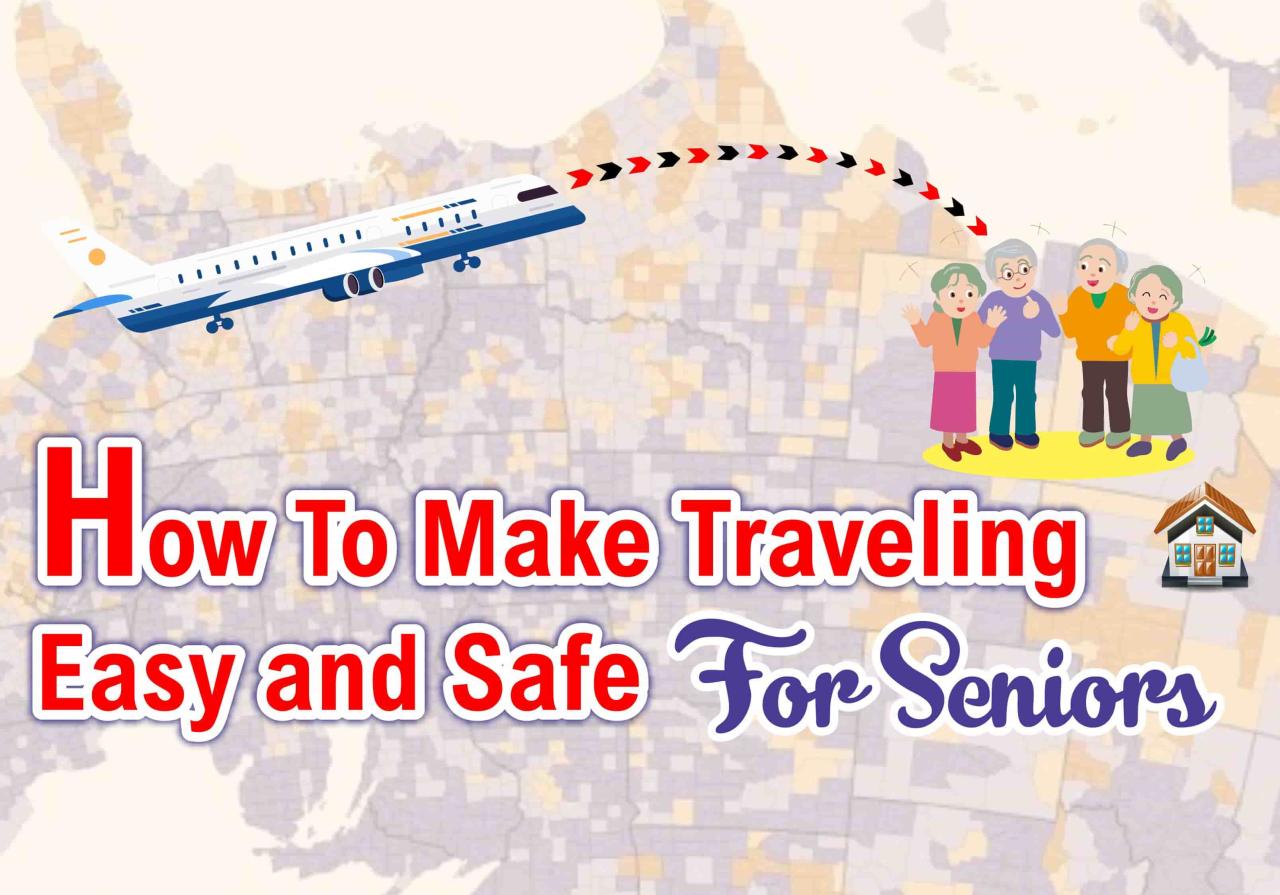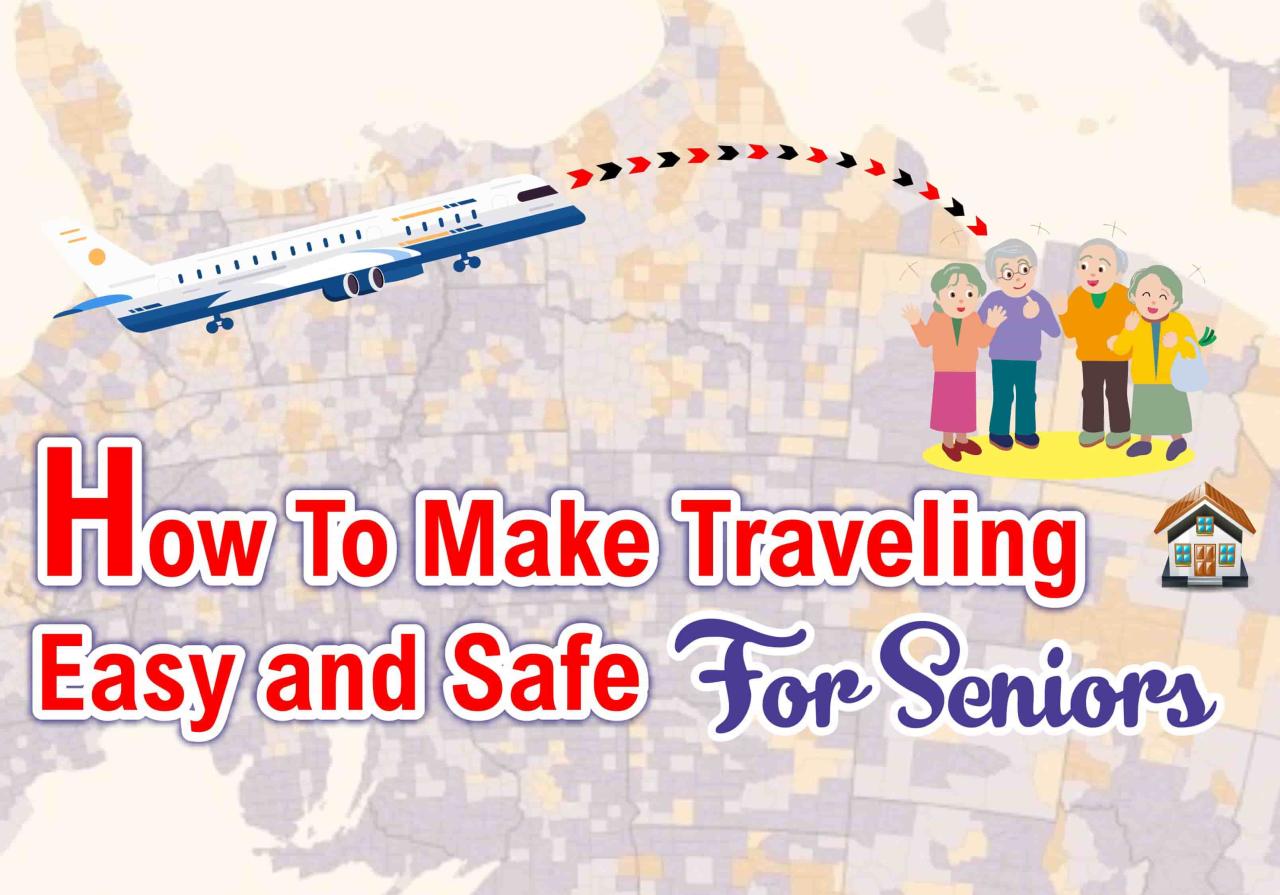Accessible European travel options for elderly people open up a world of possibilities for those seeking enriching experiences while prioritizing comfort and accessibility. This guide explores the key considerations for planning a memorable and manageable European adventure, addressing everything from choosing the right destination and securing accessible transportation to finding suitable accommodation and engaging in enjoyable activities. We’ll navigate the practicalities of air and ground travel, explore options for accessible accommodation and activities, and discuss important aspects like travel insurance and budgeting.

From selecting destinations with mild climates and easy navigation to researching accessible transportation options and booking senior-friendly accommodations, careful planning is essential. We will delve into the details of finding wheelchair-accessible attractions, museums, and tours, ensuring that every aspect of the trip is tailored to the needs and preferences of elderly travelers. The focus remains on creating a fulfilling and safe journey, allowing seniors to explore Europe’s rich culture and history at their own pace.
Planning an accessible and enjoyable trip requires careful consideration of several key factors. Let’s break down the process into manageable steps to ensure a smooth and memorable experience.
1. Choosing the Right Destination
Selecting the right destination is paramount. Prioritize locations with mild climates to avoid extreme heat or cold. Look for destinations with flat terrain, minimizing the need for navigating stairs. Excellent public transportation is crucial for ease of movement. Choose a place rich in cultural attractions like museums, gardens, and historical sites, ensuring they offer accessible entry.
The availability of nearby healthcare facilities, including hospitals and pharmacies, is also vital. Finally, research the safety and security of your chosen destination to ensure peace of mind.
2. Transportation
Accessible air travel is essential. Book flights well in advance to secure wheelchair assistance, pre-boarding, and spacious seating. Similarly, for train travel, make reservations for wheelchair spaces and confirm assistance with luggage and accessible restrooms. If considering a rental car, investigate options with hand controls or ramps. Thoroughly research the accessibility of public transportation in your chosen destination, including buses, trams, and metro systems.
When using ride-sharing services, carefully check accessibility features and ensure clear communication with the driver beforehand.
3. Accommodation
Choose hotels or holiday rentals with wheelchair-accessible rooms, ramps, elevators, and adapted bathrooms. When booking holiday rentals, pay close attention to features like ramps, wide doorways, and grab bars. Consider proximity to amenities and the availability of emergency call systems for added safety and convenience. Utilize booking platforms with accessibility filters to streamline your search. Always read reviews carefully, paying particular attention to comments regarding accessibility details from previous guests.
4. Activities and Tours
Opt for guided tours with accessible routes and a manageable pace. Ensure that museums and other attractions you plan to visit are wheelchair-accessible. Choose slow-paced activities suitable for limited mobility, such as boat trips or scenic drives. Build ample time for rest and relaxation into your itinerary. Prioritize comfort and avoid over-exertion at all costs.

Remember that a relaxing vacation is the goal.
5. Travel Insurance and Medical Considerations
Obtain comprehensive travel insurance that covers medical emergencies and repatriation. Ensure your policy covers any pre-existing conditions. Carry a sufficient supply of any necessary medication and keep your prescriptions readily available. Keep emergency contact information easily accessible. Consult your doctor before traveling to discuss any potential health concerns and obtain any necessary recommendations.
6. Budgeting and Planning
Accurately estimate the cost of accessible travel, including flights, accommodation, tours, and transportation. Consider the potential need for travel companions or assistance, including the possibility of hiring a caregiver or personal assistant. Budget for potential unexpected costs, such as medical expenses or unforeseen delays. Take advantage of senior discounts and travel deals wherever possible. Plan a flexible itinerary that allows for rest and adjustments as needed.
7. Resources and Further Information

Numerous resources can assist in planning an accessible trip. Explore websites and organizations specializing in accessible travel. Consult government resources on accessible tourism. Consider using travel agencies specializing in senior travel. Engage with online forums and communities where travelers share experiences related to accessible travel.
Seek advice from experienced travelers with similar needs. Their insights and recommendations can be invaluable. Remember, thorough planning is key to a successful and enjoyable trip.
Planning accessible European travel for elderly individuals requires careful consideration of several factors, but the rewards are immeasurable. By thoughtfully selecting destinations, transportation, and activities, and by securing appropriate insurance and support, seniors can embark on enriching and memorable journeys. This guide serves as a starting point for a fulfilling and safe travel experience, enabling older adults to explore the wonders of Europe with confidence and ease.
Remember that thorough research and preparation are key to a successful and enjoyable trip.

